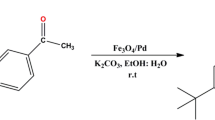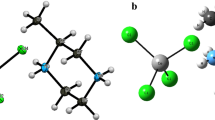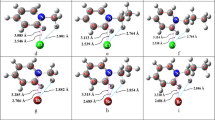Abstract
The reaction mechanism for the synthesis of quinoline-fused benzo/dia/oxa/thia/zepins is investigated using the DFT/B3LYP/6-31G(d) method. DFT conceptual reactivity indices analysis allows classification of o-aminophenol (2, X = O), o-aminothiophenol (2, X = S) and o-phenylenediamine (2, X = N) and R-substituted 2-chloroquinoline-3-carbaldehydes (1 ac) as strong electrophiles, suggesting a polar process. Besides, Parr functions and Fukui indices predict the most reactive sites for observed experimentally product formation, in agreement with the dual descriptor analysis. In the energy aspect, there is no effect of the R (R = CH3, OCH3) substituent on the thermodynamic quantities, whereas the substitution of the X has a remarkable effect. The products (4a–c, X = N) are the most stable, and their cyclizations are the easiest. An extended analysis was performed using the activation strain model/energy decomposition analysis ASM/EDA model. The obtained results indicate that the orbital interaction and electrostatic stabilizations are the principal factors favoring the reaction with X = N. Topological analysis of the electron localization function (ELF) of the bending point structures along the reaction path indicates that the reaction occurs via a non-concerted two-step mechanism.







Similar content being viewed by others
References
Katritzky AR, Rees CW (1984) Comprehensive heterocyclic chemistry. Pergamon Press
Katritzky AR (1997) Advances in heterocyclic chemistry. Academic press
Balaban AT, Oniciu DC, Katritzky AR (2004) Aromaticity as a cornerstone of heterocyclic chemistry. Chem Rev 104:2777–2812. https://doi.org/10.1021/CR0306790
Pozharskii AF, Soldatenkov AT, Katritzky AR (2011) Heterocycles in Life and Society: An Introduction to Heterocyclic Chemistry, Biochemistry and Applications: Second Edition. Heterocycles Life Soc An Introd to Heterocycl Chem Biochem Appl Second Ed. https://doi.org/10.1002/9781119998372
Tsai M, Hong Y, Chang C et al (2007) 3-(9-Carbazolyl) carbazoles and 3, 6-Di (9-carbazolyl) carbazoles as effective host materials for efficient blue organic electrophosphorescence. Adv Mater 19:862–866
Hu Z-J, Yang J-X, Tian Y-P et al (2007) Synthesis and optical properties of two 2, 2′: 6′, 2 ″-terpyridyl-based two-photon initiators. J Mol Struct 839:50–57
Park S, Kwon O-H, Kim S et al (2005) Imidazole-based excited-state intramolecular proton-transfer materials: synthesis and amplified spontaneous emission from a large single crystal. J Am Chem Soc 127:10070–10074
Bhanumathi N, Rao KR, Sattur PB (1986) Novel formation of 11,12-dihydro-6H-quino[2,3-b] [1,5] benzodiazepines: reaction of 2-chloroquinoline-3-carbaldehydes with o-phenylenediamine. Heterocycles 24:1683–1685. https://doi.org/10.3987/R-1986-06-1683
Zecchini GP, Torrini I, Paradisi MP (1987) Synthesis of quino/2,3-b //1,5/ benzoxazepines: a novel tetracyclic ring system. Heterocycles 26:2443–2447. https://doi.org/10.3987/R-1987-09-2443
Torrini I, Zecchini GP, Paradisi MP (1988) The condensation products of 2-chloro-3-formylquinolines with o-aminothiophenol. Heterocycles (Sendai) 27:401–405
Nielsen FE, Pedersen EB (1985) Annulated 1,2,3-triazoles. 3. Synthesis of 1,2,3-triazolo[4,5-b][1,5]benzoxazepin-10(9H)-ones and 10-(4-substituted-1-piperazinyl)-1,2,3-triazolo[4,5-b][1,5]benzoxazepines. J Heterocycl Chem 22:1693–1701. https://doi.org/10.1002/JHET.5570220645
Becke AD (1993) Density-functional thermochemistry. III. The role of exact exchange. J Chem Phys 98:5648–5652. https://doi.org/10.1063/1.464913
Lee C, Yang W, Parr RG (1988) Development of the Colle-Salvetti correlation-energy formula into a functional of the electron density. Phys Rev B 37:785
Frisch MJ, Trucks GW, Schlegel HB et al (2009) Gaussian 09, rev. Gaussian Inc, Wallingford
Head-Gordon M, Pople JA (1988) A method for two-electron Gaussian integral and integral derivative evaluation using recurrence relations. J Chem Phys 89:5777–5786
Gonzalez C, Schlegel HB (1991) Improved algorithms for reaction path following: higher-order implicit algorithms. J Chem Phys 95:5853–5860
Fukui K, Yonezawa T, Nagata C, Shingu H (1954) Molecular orbital theory of orientation in aromatic, heteroaromatic, and other conjugated molecules. J Chem Phys 22:1433–1442
Fukui K (1970) Theory of orientation and stereoselection. In: Orientation and Stereoselection. Springer, pp 1–85
Parr RG, Szentpály LV, Liu S (1999) Electrophilicity index. J Am Chem Soc 121:1922–1924
Pérez P, Domingo LR, Aurell MJ, Contreras R (2003) Quantitative characterization of the global electrophilicity pattern of some reagents involved in 1, 3-dipolar cycloaddition reactions. Tetrahedron 59:3117–3125
Domingo LR, Arnó M, Contreras R, Pérez P (2002) Density functional theory study for the cycloaddition of 1, 3-butadienes with dimethyl acetylenedicarboxylate. Polar stepwise vs concerted mechanisms. J Phys Chem A 106:952–961
Parr RG, Yang W (1989) Density-functional theory of atoms and molecules Oxford Univ. Press. ed Oxford
Parr RG, Pearson RG (1983) Absolute hardness: companion parameter to absolute electronegativity. J Am Chem Soc 105:7512–7516
Chermette H (1999) Chemical reactivity indexes in density functional theory. J Comput Chem 20:129–154
Kohn W, Sham LJ (1965) Self-consistent equations including exchange and correlation effects. Phys Rev 140:A1133
Domingo LR, Chamorro E, Pérez P (2008) Understanding the reactivity of captodative ethylenes in polar cycloaddition reactions. A theoret study J Org Chem 73:4615–4624
Domingo LR, Pérez P (2011) The nucleophilicity N index in organic chemistry. Org Biomol Chem 9:7168–7175
Yang W, Mortier WJ (1986) The use of global and local molecular parameters for the analysis of the gas-phase basicity of amines. J Am Chem Soc 108:5708–5711
Chattaraj PK, Nath S, Sannigrahi AB (1994) Hardness, chemical potential, and valency profiles of molecules under internal rotations. J Phys Chem 98:9143–9145
Domingo LR, Pérez P, Sáez JA (2013) Understanding the local reactivity in polar organic reactions through electrophilic and nucleophilic Parr functions. RSC Adv 3:1486–1494
Chamorro E, Pérez P, Domingo LR (2013) On the nature of Parr functions to predict the most reactive sites along organic polar reactions. Chem Phys Lett 582:141–143
Ayers PW, Morell C, De Proft F, Geerlings P (2007) Understanding the Woodward-Hoffmann rules by using changes in electron density. Chem Eur J 13:8240–8247
Morell C, Grand A, Toro-Labbé A (2006) Theoretical support for using the Δf (r) descriptor. Chem Phys Lett 425:342–346
Becke AD, Edgecombe KE (1990) A simple measure of electron localization in atomic and molecular systems. J Chem Phys 92:5397–5403
Gatti C (2005) Chemical bonding in crystals: new directions. Zeitschrift für Krist Mater 220:399–457
Silvi B, Savin A (1994) Classification of chemical bonds based on topological analysis of electron localization functions. Nature 371:683–686
Savin A, Jepsen O, Flad J et al (1992) Electron localization in solid-state structures of the elements: the diamond structure. Angew Chemie Int Ed English 31:187–188
Lu T, Chen F (2012) Multiwfn: a multifunctional wavefunction analyzer. J Comput Chem 33:580–592
Pettersen EF, Goddard TD, Huang CC et al (2004) UCSF Chimera—A visualization system for exploratory research and analysis. J Comput Chem 25:1605–1612
Domingo LR, Aurell MJ, Pérez P, Contreras R (2002) Quantitative characterization of the local electrophilicity of organic molecules. Understanding the regioselectivity on Diels−Alder reactions. J Phys Chem A 106:6871–6875
Pérez P, Domingo LR, Duque-Noreña M, Chamorro E (2009) A condensed-to-atom nucleophilicity index. An application to the director effects on the electrophilic aromatic substitutions. J Mol Struct Theochem 895:86–91
Reed AE, Weinhold F (1983) Natural bond orbital analysis of near-Hartree-Fock water dimer. J Chem Phys 78:4066–4073. https://doi.org/10.1063/1.445134
Echegaray E, Cárdenas C, Rabi S et al (2013) In pursuit of negative Fukui functions: examples where the highest occupied molecular orbital fails to dominate the chemical reactivity. J Mol Model 19:2779–2783
Zamora PP, Bieger K, Cuchillo A et al (2021) Theoretical determination of a reaction intermediate: Fukui function analysis, dual reactivity descriptor and activation energy. J Mol Struct 1227:129369
Bickelhaupt M, Bickelhaupt M (1999) Understanding reactivity with Kohn–Sham molecular orbital theory: E2–S. J Comput Chem 20:114–128
Kelly TR, Hcnutt RW (1975) Cyclobutenone: the synthesis and Diels-Alder reactivity of 4,4-dimethylcyclobutenone. Tetrahedron Lett 4:285–288
Hamlin TA, Fernández I, Bickelhaupt FM (2019) How Dihalogens Catalyze Michael Addition Reactions. Angew Chemie - Int Ed 58:8922–8926. https://doi.org/10.1002/anie.201903196
Ess DH, Houk KN (2007) Distortion/interaction energy control of 1,3-dipolar cycloaddition reactivity. J Am Chem Soc 129:10646–10647. https://doi.org/10.1021/ja0734086
Ziegler T, Rauk A (1977) On the calculation of bonding energies by the Hartree Fock Slater method-I. The transition state method. Theor Chim Acta 46:1–10. https://doi.org/10.1007/BF02401406
Wolters LP, Bickelhaupt FM (2015) The activation strain model and molecular orbital theory. Wiley Interdiscip Rev Comput Mol Sci 5:324–343. https://doi.org/10.1002/wcms.1221
von Hopffgarten M, Frenking G (2012) Energy decomposition analysis. Wiley Interdiscip Rev Comput Mol Sci 2:43–62. https://doi.org/10.1002/wcms.71
Liu S, Lei Y, Qi X, Lan Y (2014) Reactivity for the Diels-Alder reaction of cumulenes: A distortion-interaction analysis along the reaction pathway. J Phys Chem A 118:2638–2645. https://doi.org/10.1021/jp411914u
Levandowski BJ, Hamlin TA, Bickelhaupt FM, Houk KN (2017) Role of orbital interactions and activation strain (distortion energies) on reactivities in the normal and inverse electron-demand cycloadditions of strained and unstrained cycloalkenes. J Org Chem 82:8668–8675. https://doi.org/10.1021/acs.joc.7b01673
Jin R, Liu S, Lan Y (2015) Distortion–interaction analysis along the reaction pathway to reveal the reactivity of the Alder-ene reaction of enes. RSC Adv 5:61426–61435. https://doi.org/10.1039/C5RA10345B
Fernández I, Bickelhaupt FM (2014) The activation strain model and molecular orbital theory: understanding and designing chemical reactions. Chem Soc Rev 43:4953–4967. https://doi.org/10.1017/CBO9780511544750.008
Author information
Authors and Affiliations
Contributions
Conceptualization and methodology: were contributed by NB, HM, LM and CM. Investigation was contributed by NB, HM, NL, and HC. Writing—original draft preparation, was contributed by HM. Writing—review & editing, was contributed by CM, LM, HM. Experimental measurements were contributed by NB, NL, HM, AAM. Resources were contributed by NL and CM. Data curation was contributed by NB, HM, NL, LM, and HC. All authors have read and agreed to the published version of the manuscript.
Corresponding authors
Ethics declarations
Conflict of Interest
All authors have participated in (a) conception and design, or analysis and interpretation of the data; (b) drafting the article or revising it critically for important intellectual content; and (c) approval of the final version. The authors have no affiliation with any organization with a direct or indirect financial interest in the subject matter discussed in the manuscript.
Additional information
Publisher's Note
Springer Nature remains neutral with regard to jurisdictional claims in published maps and institutional affiliations.
Supplementary Information
Below is the link to the electronic supplementary material.
Rights and permissions
Springer Nature or its licensor (e.g. a society or other partner) holds exclusive rights to this article under a publishing agreement with the author(s) or other rightsholder(s); author self-archiving of the accepted manuscript version of this article is solely governed by the terms of such publishing agreement and applicable law.
About this article
Cite this article
Benabila, N., Merouani, H., Latelli, N. et al. DFT study of the condensation products of 2-chloro-3-formylquinolines with o-aminophenol, o-aminothiophenol and o-phenylenediamine. Theor Chem Acc 142, 111 (2023). https://doi.org/10.1007/s00214-023-03052-2
Received:
Accepted:
Published:
DOI: https://doi.org/10.1007/s00214-023-03052-2




